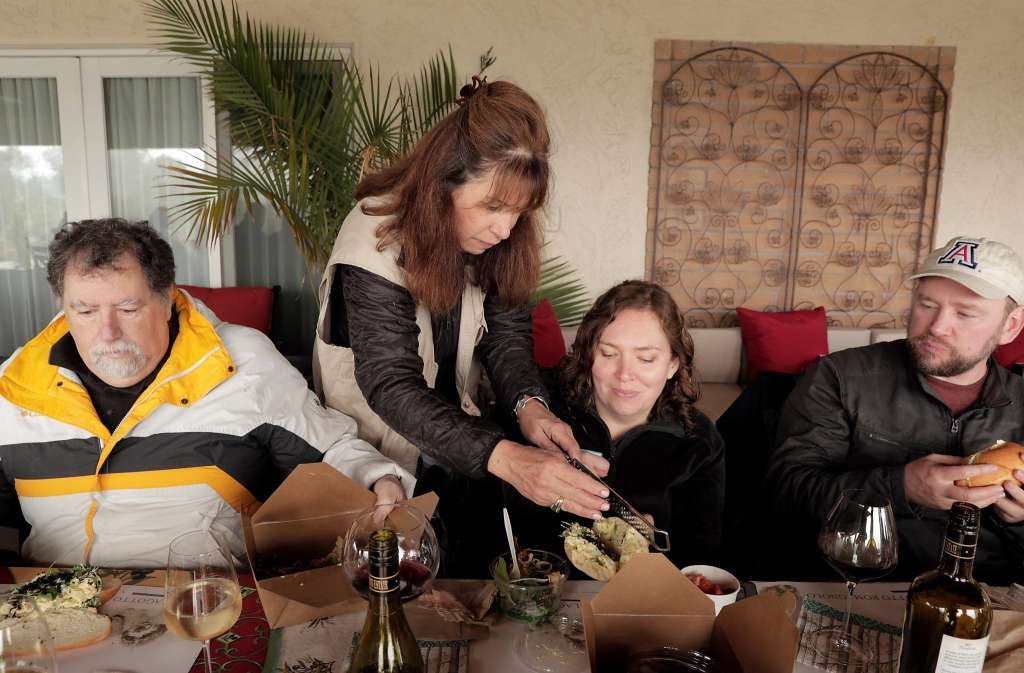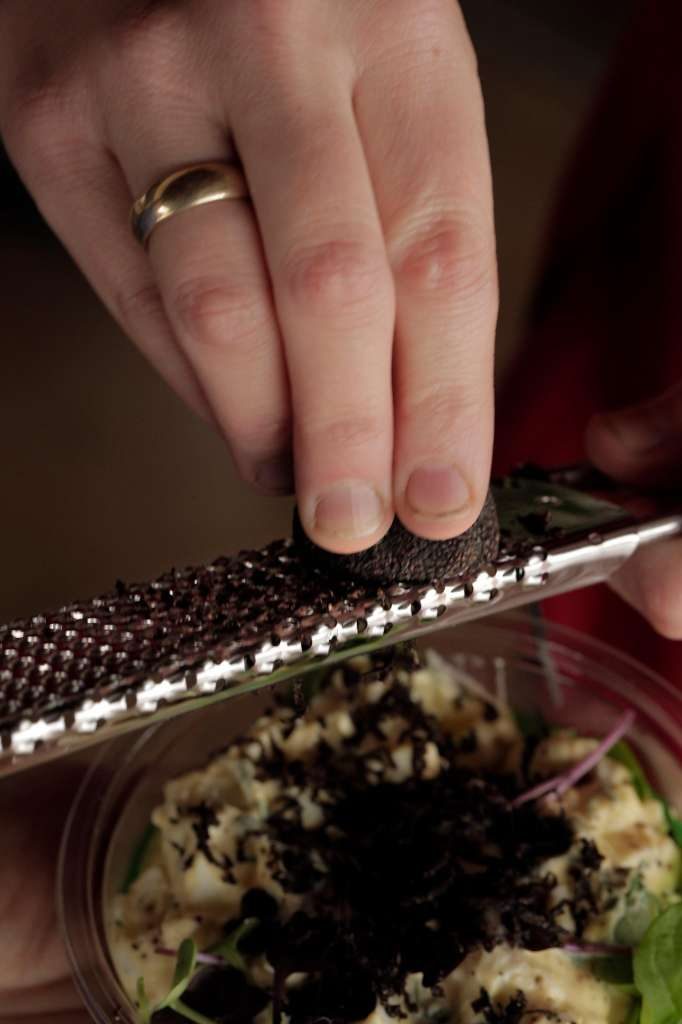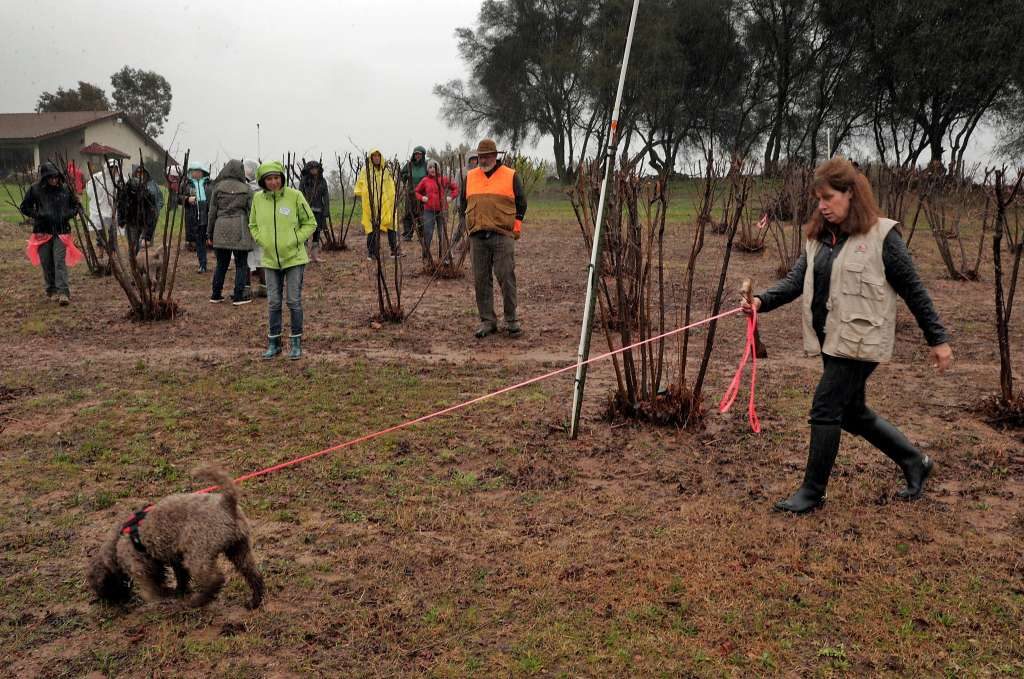San Francisco Chronicle : By Tara Duggan March 27, 2019

As California’s truffle industry grows, so does the need for trained hunters.
In Placerville, Alana McGee trains dogs bred for centuries to sniff out the luxury ingredient.
“Truffle,” William Shadbolt said firmly to Zane, his 5-month-old dog, holding a small perforated tin with a slice of the luxury mushroom inside. As soon as the distracted puppy finally came over to sniff it, Shadbolt gave him a treat.
“Good!” said trainer Alana McGee of Truffle Dog Co., praising both man and dog. When Shadbolt repeated the command, the white dog with chocolate-brown spots sat down in compliance and quickly sniffed the tin, having picked up that a payoff would follow.
Twelve curly-haired Lagotto Romagnolo dogs, along with their humans, had gathered on a truffle farm in Placerville (El Dorado County) for a day-long workshop in the ancient art of truffle hunting.
All the dogs at the day’s workshop were Lagotto Romagnolo (lah-GOAT-TOH ro-man-YO-lo), an Italian breed, and all were related. Placerville-area breeder Lisa Sobon specializes in the breed, which may have been the world’s original water retriever, predating the poodle, the Labrador and, of course, the labradoodle.
According to the Lagotto Romagnolo Club of America’s website, the breed may have originated as far back as the fifth or sixth century B.C. along Italy’s northern Adriatic coast, in the region of Romagna (“Lagotto Romagnolo” means lake dog of Romagna). A 15th century Andrea Mantegna painting titled “The Meeting” shows a kinky-haired Lagotto lookalike peeking out between the limbs of several towering figures. Originally, they were bred to hunt waterfowl, until, apparently, they had hunted them into exinction. Then they turned to truffles.
In Southern Europe, where several types of truffles grow wild and are farmed extensively, Lagotto Romagnolo and other dogs are trained to find their scent so that farmers can dig them up and sell the pricey tubers. Italian dog breeders have been known to rub truffle oil on the mother’s teats to give puppies a good early association with the tuber.
Read Full Article At San Francisco Chronicle:https://www.sfchronicle.com/restaurants/article/Northern-California-is-suddenly-awash-in-locally-13592399.php?fbclid=IwAR3PNFyS8wzyS2RM72nd6JiToqHaAR_K5-XnprvPEBfq4vNh3YTPysfdz3Y#photo-16880918















